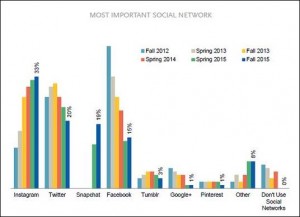Planning for a successful website design can be daunting. Having a detailed strategy that guides your process from start to finish can keep your project on track and ensure that your website design remains aligned with your overall business goals.
Here are our tips for strategizing a successful website design.
1. Create and Understand Your Buyer Personas
By now, you’ve likely heard this advice before, but creating buyer personas should be one of your first priorities when beginning any marketing project for your brand. Buyer personas help you understand and identify your website’s audience, and that means you can guide the content and design of the site to speak to their specific challenges and meet their needs.
Figuring out how to create buyer personas can bring on a whole new set of challenges. Luckily, we’ve already created a guide to help you understand and create your own personas.
2. Understand Your Buyer’s Journey
Once you’ve established your buyer personas, you can now focus on understanding and mapping out the journey you want them to take when they land on your website. Using the Buyer’s Journey methodology will help you create a website design and content strategy that leads to more conversions and sales.
The typical Buyer’s Journey has three stages: awareness, consideration, and decision. Using your buyer personas and these steps in the Buyer’s Journey in tandem will allow you to create persona-targeted content for each stage of the Buyer’s Journey. Once this content is mapped out, you begin focusing on designing the site.
3. Create Your Sitemap
The sitemap is where the design of your site and your Buyer’s Journey begin to come together. A sitemap will give you a clear picture of how the information on your site will be structured, how pages will be organized, and how users will navigate through the site.
To create a sitemap, begin with the homepage and create a hierarchy of pages based on importance and how they should be indexed by search engines. Prioritize your content into categories, with subcategories below that follow a logical hierarchy, such as:
- About
- Our Team
- Contact Us
- Mission & Values
- Our Team
- Basic
- Pro
- Premium
Once completed, the sitemap can be used by graphic designers and web developers to bring the site to life.
4. Create Your Content
With your sitemap created and your page hierarchy established, you can now begin to flesh out your website content. Keeping in mind your buyer personas and the Buyer’s Journey, you can create copy that educates and helps your prospective buyers solve their problems.
Incorporate Keywords
Although it’s important to incorporate keywords into your website copy, you should make sure they fit naturally within your content. Additionally, you can use subheads to integrate additional keywords on your website pages.
Follow Copywriting Best Practices
As you write your website content, it’s important to follow best practices. Content should connect the dots between your buyer personas’ problems and your solutions. Additionally, content should be succinct and focused on the details that will resonate most with your audience.
5. Create Website Pages (with Goals and Conversions in Mind)
When it finally comes time to design your website pages, it’s important to have conversion opportunities in mind. Website pages should be designed like landing pages—in other words, they should contain a singular, clear message that communicates to visitors that may only see that one page and not travel to other pages on your site.
Designing pages with this mindset allows you to create pages that users see as a total source of information, and it empowers them to begin the decision making process.
6. Continue to Improve
As philosophies like growth-driven design have become widely used, most organizations are approaching their websites as long-term projects that are constantly changing alongside business goals, user behavior, and competition changes.
Using an approach like growth-driven design can allow your site to remain nimble and competitive by giving you the ability to update aspects of your site to meet the changing needs of your prospective buyers.
A Strategically Designed Website Means Success
When creating a website, it’s important to look at the big picture and keep the purpose of your website at the forefront of your process. Keep your business goals and purpose of the website in mind when making any decisions throughout the design process.
Finally, remember that your website is a living, breathing tool that you can update and improve continuously as you analyze data and feedback from your users. Build your website with flexibility in mind, and you’ll be on the path to meeting your website goals.
Digital & Social Articles on Business 2 Community
(63)





